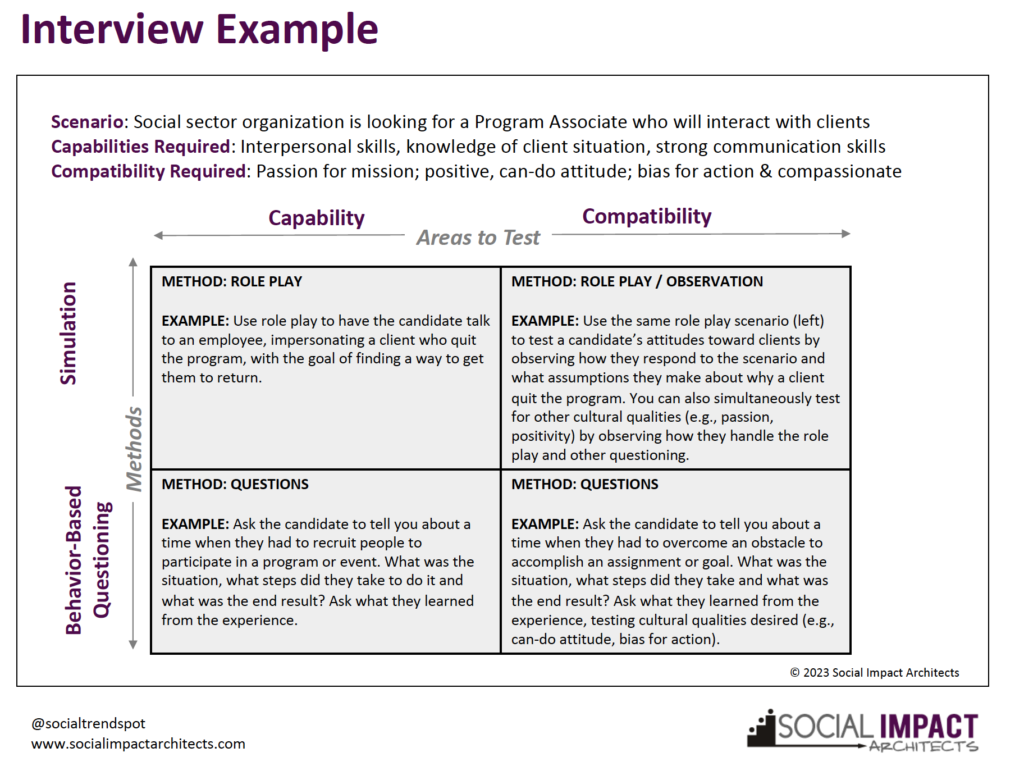 Happy Valentine’s Week! Since the nonprofit sector is in a hiring frenzy, we decided to share our hints on hiring employees, online dating-style. The best dating apps connect people looking for long-term relationships and match them based on compatibility. In making a commitment to long-term relationships, people want to know if the individual is capable of being a good spouse or parent, shares the same goals and whether they are “the one.” The search for employees to help carry out our missions is not much different. We not only need to know if the candidate can do the job, but we also want to know if they share our vision of success and are the right fit for the job and our agency. Here are some online-dating-inspired recruitment tips to help your social sector organization find the right matches.
Happy Valentine’s Week! Since the nonprofit sector is in a hiring frenzy, we decided to share our hints on hiring employees, online dating-style. The best dating apps connect people looking for long-term relationships and match them based on compatibility. In making a commitment to long-term relationships, people want to know if the individual is capable of being a good spouse or parent, shares the same goals and whether they are “the one.” The search for employees to help carry out our missions is not much different. We not only need to know if the candidate can do the job, but we also want to know if they share our vision of success and are the right fit for the job and our agency. Here are some online-dating-inspired recruitment tips to help your social sector organization find the right matches.
Tip #1: Determine Your Dimensions of Capability
Even before you post a job description, develop a list of capabilities (or success factors) the position requires and screen applicants accordingly. These capabilities vary by level and function. For example, if you are hiring a development director, the candidate should have strong relationship-building and influence skills. Development assistants, however, may not need to be as strong in relationship-building, but should have strong execution skills like attention to detail, ability to focus and follow through, among others. To ensure your hires have these capabilities as true strengths, organizations may also ask candidates to take assessments like StrengthsFinder.
Tip #2: Test for Capability AND Compatibility
When you sign up for a dating website, you pressure-test your matches before making a commitment through messages, phone calls or dates. Likewise, when hiring an employee or moving an existing employee to another position, you should pressure-test candidates by running simulations and asking behavior-based questions to see if they have the skills and characteristics that make them a strong fit for your agency and/or this specific role. Be careful with making assumptions. Simulations can be used to mimic on-the-job situations like client or donor interactions. Ancillary interactions can help you get a better idea of a candidate’s true personality, too. When I worked for the American Heart Association, we always asked the receptionist how they were treated by a job candidate as another data point in determining whether our impression from the interview was correct. In addition, behavior-based questions, which assume past performance is the best predictor of future performance, can be used to ask candidates to describe a time when they exhibited certain behaviors. Both simulations and behavior-based questions will help you test capabilities as well as that all-important cultural fit.
Tip #3: Rate Your Candidates Against Dimensions of Capability and Compatibility
It can be easy to be swept away by a candidate’s charisma. But, when hiring, especially for leadership roles, it is important to evaluate your top choices against all criteria and involve staff from relevant departments using an objective decision criteria process. Be sure to revisit the list of competencies and criteria you developed at the start of the search and rate each candidate in every area to see who surfaces to the top. You may be surprised! Once the data is in, look at the trade-offs between candidates and find the best fit for your organization.
Tip #4: Right-Size Your Candidate for Success
No one is perfect. After you have hired a candidate, sit down with them in their first week to create a 90-day onboarding and transition plan in which they can learn from others, gain skill sets that may be underdeveloped and better understand the culture. This time spent upfront will pay great dividends in their future and help ensure their success at your organization.
With estimates suggesting that the loss of employees costs organizations 30 to 400 percent of their annual salary, the social sector has much to gain (and save) by hiring right the first time. If you have innovative hiring practices or insightful interview questions, please share them with us and other Social TrendSpotters.

